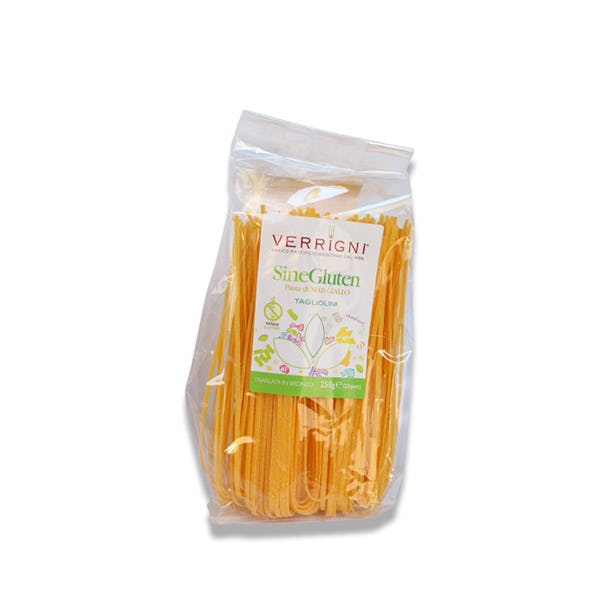
TASTING NOTES FROM THE CURATOR
A traditional pasta from the Italian regions of Marche and Emilia-Romagna. Its name comes from the Italian word, “tagliare,” which means “to cut.” It’s similar in look to fettuccine, and comes in long flat ribbons.
This Verrigni Tagliatelle is gluten-free. Gluten-free pasta is made with buckwheat, quinoa, amaranth, rice, or in this case, white corn. It’s a great option if you or your guests have celiac disease or gluten intolerance. It’s also great for people on a diet, as it’s a little healthier than regular pasta. You could barely notice the difference as they taste exactly the same. The only—if any, would be in texture, but it’s very subtle.
PREPARATION AND PAIRINGS
You can use Verrigni Gluten-Free Tagliatelle as an alternate pasta for your fettuccine or spaghetti dishes. Use it exactly the way you would any long pasta. Popularly, tagliatelle is served with a meat sauce, or a Bolognese sauce, but it’s also great with creamy sauces like alfredo or carbonara.
Be aware, though, that cooking time will be a little different with gluten-free pasta. It’s very easy for this pasta to get gummy or mushy when overcooked. Check the recommended cooking time on the package, then subtract two minutes from it. Start from there, and keep checking your pasta until it’s al dente.
FROM ROSBURGO TO THE WORLD
Luigi Verrigni founded Antico Pastificio Rosetano in 1898. He supplied fine artisan pasta to noble families in Rosburgo, and thus, the quality of his pastas was already known. His pastas were made with grains ground with stone millstones, then mixed with Gran Sasso water, and dried on bamboo canes. The demand for Verrigni pastas got so big that Luigi’s son, Gaetano, experimented with “dressing rooms,” where he put current fans and other heat sources to create a steady temperature for the pasts drying.
Through the years, Verrigni Pasta has expanded its distribution, introduced the innovative gold die, and in the 1980s, was one of the few pasta factories to sell organic pasta. This made them even more popular. They continue with the innovation, and pushing the boundaries, and trying new things. Verrigni continues to make superior quality pasta, with all the craftsmanship of tradition, and the beauty of technology.
Storage Instructions
Store dry, uncooked pasta in a cool, dry pantry for up to one year. Preserve freshness by storing dry pasta in an air-tight box or container. Store plain (no sauce or other ingredients) cooked pasta in a container or plastic sealable bag in the refrigerator for up to five days and up to three months in the freezer.

